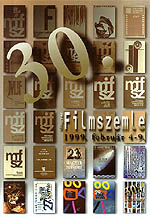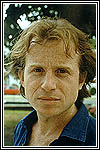 |
Vol 0, No 28
6 April 1999 |
|
|
Loving Outside the Boundaries (Part I) Andras Salamon's Kozel a szerelemhez Andrew J Horton Much has been going wrong with Hungarian cinema of late; it appears that in Hungary, script-writing is now considered a trade rather than an art, and character depth is a dirty word. Andras Salamon's latest film Kozel a szerelemhez (Close to Love, 1998) is a welcome and refreshing exception to the trend. Andras Salamon made his first film, Hajlektalanok (Homeless) in 1989 and since then he has clocked up some 35 films, mostly documentaries, to his name. Many of these works are concerned with the people that society has rejected, with titles such as Ciganok (Gypsies, 1989), Elhagyott emberek (Abandoned People, 1993) and Film a melegekrol (A Film about Gays, 1993). Salamon is also a keen observer of the more negative aspects of city life and, of course, the two themes - city life and society's most vulnerable - are ripe for bringing together, as he has done in Gyerekek a varosban (Children and the City, 1991), Fiatal bunozok (Juvenile Delinquents, 1994), Koldusgyerekek (Child Beggars, 1994), and Varoslakok (City People, 1997).
Warmth comes to his life first in the form of a stray dog he adopts and then as a young Chinese woman who cannot speak a word of Hungarian and is at the mercy of a gang. Despite the lack of verbal communication, the two fall in love. Not everyone is keen on Karoly's choice of a girlfriend though. His father and mother don't know what to be more bemused at: the fact that their son hasn't found himself a nice Hungarian girl or the fan and musical tie pin she brings for them as presents. His fellow officers are even less impressed with his "Chinese whore," and his superiors, while they don't question his taste in women, object to the fact he uses a patrol car with all the lights flashing to take her home when he is on duty. In these circumstances, it is only a matter of time before tempers fray and Karoly is eventually provoked into drawing his gun on another policeman. Cast into prison and parted from his beloved, he endeavours to rebuild his shattered dreams. Driven by the characters Regular readers of this Kinoeye look at the Hungarian Film Week will be aware of the long-standing relationship between documentaries and fiction films in Hungarian cinema. Many of the classic directors cut their teeth on making documentary films before moving onto full-length feature films. Salamon's extensive experience with the medium of the documentary clearly assists him in his handling of Kozel a szerelemhez. Well versed in his principle themes by now, Salamon creates his characters with confidence and depth; he allows them to be the basis of the film rather some preordained number of car-chases, shoot-outs and love scenes that directors these days seem to think are absolutely necessary to their film. Ironically, Kozel a szerelemhez does contain a car-chase, a shoot-out and a love-scene but they are their because the characters, and not the director, demand them. Kozel a szerelemhez is a modest film which has simple aims - to tell a story. Since it was one of the few films that seemed prepared to do this, it is perhaps no surprise that the film was rewarded with a distinction for the best screenplay. Whilst hardly likely to set the cinematic world on fire, Kozel a szerelemhez is pleasant and engaging to watch. Furthermore, in an era in which Hungarian film is seriously going down the Hollywood plug-hole it is encouraging and even perhaps heart-warming to see that someone in Hungary still has some idea of how to make a film competently. Andrew J Horton, 6 April 1999
|
| |||||||||||||||||
![]()
Copyright (c) 1999 - Central Europe Review and Internet servis, a.s.
All Rights
Reserved

